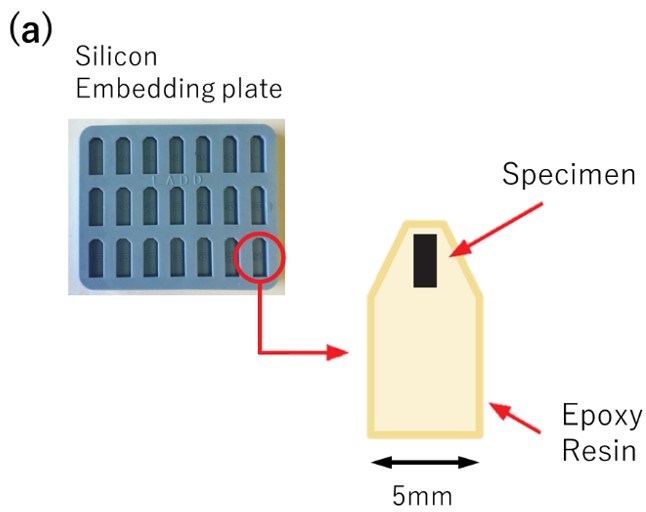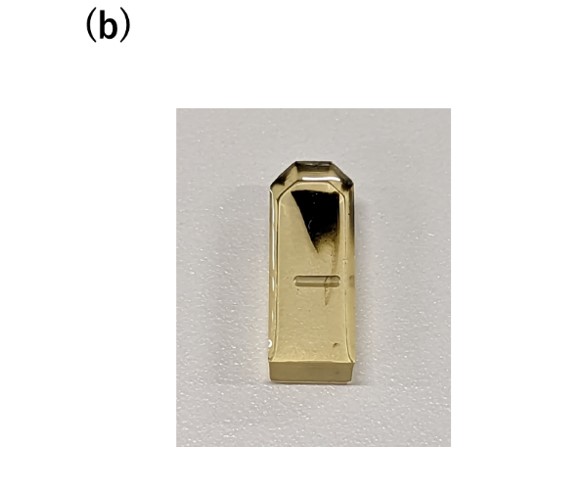樹脂包埋
樹脂包埋
resin embedding method
[目次:試料等(試料および試料作製)]
TEM観察用の試料作製において、試料をウルトラミクロトームで切削しやすくするために、試料を樹脂に埋め込むこと。超薄切片を作製する際、試料が柔らかい(水分や脂質を多く含む)場合は薄く切削することが困難である。試料を樹脂に埋め込んで補強することで、試料の形態を保ったまま、TEM観察可能な薄さに切削できるようになる。また、微小な試料(粉体試料)の場合は、切削時に試料を支える部分を付けるために樹脂包埋が用いられる。
樹脂包埋の例として、生物試料によく用いられるエポキシ樹脂での手順を示す。まず、シリコン包埋板に試料を入れ、そこに主剤(エポキシ樹脂)・硬化剤・架橋剤を調合した液体を流し込む。その後、一定時間加熱して樹脂を硬化(重合)させると樹脂に包埋された試料ができる。


図 1 (a) シリコン包埋板の例(左上)および包埋板上の凹みに試料と樹脂を入れたときの模式図(右下)。試料は凹みの先端側に入れる。樹脂の下部はウルトラミクロトームで試料を保持する部分となる。 (b) 樹脂包埋した試料の写真。
The resin embedding method in specimen preparation for TEM observation is to embed a specimen in a resin to make it easy to slice the specimen with an ultramicrotome.
If the specimen is soft (e.g. contains much water or lipids), it is difficult to slice the specimen thinly when making ultra-thin sections. By embedding the specimen in the resin for reinforcement, it is possible to slice the specimen to a thickness suitable for TEM observation while maintaining the morphology of the specimen. Resin embedding is also used for small specimens (e.g. powder specimens) to provide a support part during the slicing.
As an example of resin embedding, Fig. 1 shows the procedure using epoxy resin, which is widely used for biological specimens. First, a specimen is placed in the cavities on a silicon embedding plate, and a liquid mixture of the main agent (epoxy resin), a hardening agent and a cross-linking agent is poured into the cavities. The resin-embedded specimen is obtained by heating the plate for a given length of time to harden (polymerize) the resin.


Fig. 1(a) Example of a silicon embedding plate (upper left), and schematic diagram of a specimen embedded with epoxy resin in a cavity (lower right). The specimen is placed at the upper end of the cavity. The lower part of the resin serves as a part to hold the specimen with an ultramicrotome. (b) Photo of a hardened resin containing the specimen taken out from the cavity.
関連用語から探す
説明に「樹脂包埋」が含まれている用語






